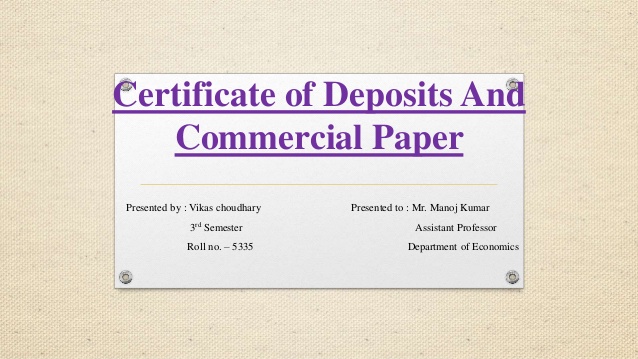Contents
Includes amortisation of assets whose useful life is predetermined. In business, certain expenses are incurred/paid for more than one year due to many reasons. It can be start-up expenses, advertisement expenses, insurance expenses etc. they are paid in advance for safeguarding the assets/ availing added benefits. A deferred expense is a cost that has already been incurred, but which has not yet been consumed. It will be spread over the period for which its benefit will be available.

Where a company arrives at the amortization amount in respect of the said Intangible Assets in accordance with any method as per the applicable Accounting Standards, it shall disclose the same. Depreciation is the systematic allocation of the depreciable amount of an asset over its useful life. The depreciable amount of an asset is the cost of an asset or other amount substituted for cost, less its residual value. On the other hand, EBITDA is a near-meaningless number for corporations in capital-intensive industries like oil and gas, mining, and infrastructure. Because of a large amount of capital spending necessary, EBITDA and cash flow will frequently be far apart. Because Depreciation and Amortisation capture a fraction of prior capital expenditures, EBIT may be a better choice in this scenario.
Amortization Meaning
The effective interest amortization method is more accurate than the straight-line method. International Financial Reporting Standards require the use of the effective-interest method, with no exceptions. We can use an amortization table, or schedule, prepared using Microsoft Excel or other financial software, to show the loan balance for the duration of the loan. An amortization table calculates the allocation of interest and principal for each payment and is used by accountants to make journal entries. Amortization works on the same principle as depreciation and is applied to intangible assets like patents, copyrights etc. The word impairment is normally related to long-term intangible assets and its market value lowered significantly.

This amount will need to be amortized over the 5-year life of the bonds. Using the same format for an amortization table, but having received $91,800, interest payments are being made on $100,000. Since her interest rate is 12% a year, the borrower must pay 12% interest each year on the principal that she owes. As stated above, these are equal annual payments, and each payment is first applied to any applicable interest expenses, with the remaining funds reducing the principal balance of the loan. This schedule is quite useful for properly recording the interest and principal components of a loan payment. Amortization is a regular decrease in the value of an intangible asset or the manner in which to pay off a debt over a period of time by periodic payments.
Before an investor invests in the company’s stock, they take a peek at the performance of that company. Based on the past records of the company, investors take their next step. All these can be analysed with the help of two indicators – EBITDA margin and operating margin. If you are looking at the possibility of online trading, it might be easier said than done. So, here we walk you through the indicators and their differences.
Difference between Depreciation and Amortization
If they expense out the entire amount in the same year of spending then imagine what can happen??? Suppose an entity spends 100 lakhs for fixed assets and it has revenue of 70 lakhs. If they charge the entire 100 lakhs in the same year of spending then their revenue will show negative results. This treatment is wrong because assets have a long life and expending it out in a single year will show the wrong financial situation of the entity. EBITDA is the abbreviation for ‘earnings before interest, taxes, depreciation and amortization’.
ClearTax can also help you in getting your business registered for Goods & Services Tax Law. ClearTax offers taxation & financial solutions to individuals, businesses, organizations & chartered accountants in India. ClearTax serves 1.5+ Million happy customers, 20000+ CAs & tax experts & 10000+ businesses across India. The principal and interest amounts paid on the loan will change from one month to the subsequent, while the payment amount will be fixed for each payment period.
Enterprise Value/EBITDA is a measure used to determine if for the overvaluation or undervaluation of a company when comparing two companies. Because different industries have widely varied average ratios, comparing comparable organisations is necessary. Please read the scheme information and other related documents carefully before investing. Please consider your specific investment requirements before choosing a fund, or designing a portfolio that suits your needs. In case the depreciation, amortization, and taxes got added back to the net income, the EBITDA will be Rs. 40 million.
The street currently ascribes enterprise value /EBITDA of eight for the petrochemical business, which contributes one-third of the total fair value of the O2C business. The Cash Flow Statement, where these expenses will be fully split out, is the quickest approach to guarantee https://1investing.in/ that you have the total depreciation and amortisation statistics. Multiplying the EBITDA by a valuation multiple derived from industry transactions, stock research reports, or M&A can provide an analyst with a rapid estimate of the company’s value and a valuation range.
- In case the depreciation, amortization, and taxes got added back to the net income, the EBITDA will be Rs. 40 million.
- One can judge if a company’s EBITDA is favourable or not by simply calculating the EBITDA margin.
- Depreciation means reducing the tangible fixed assets costs over the lifespan it has.
- And an entity is supposed to apply relevant rates while calculating depreciation for his/her assets.
- Hiral Shah is an experienced chartered accountant and post graduate in commerce stream.
EBITDA margin and Operating margin are the most preferred metrics by investors to check the company’s profitability and their financial well-being. Yet, there are some minor differences between the two metrics, which we bring to your attention. After getting operating income, the next step is finding the revenue of the business. Also known as sales receipts or net sales, it’s the income received from selling the goods of the company. Don’t forget to deduct sales returns, sales discounts, and sales allowance to get the net sales for that specific period. Now that you have net sales or revenue and operating income, the final step is to find the operating margin.
EBITDA margin & Operating margin have their fors and againsts. If you are looking for in-depth analysis, operating margins data will suffice. Even if you go with both the metrics, make sure you compare apples to apples for an apt outcome. ‘‘Continuous process plant’’ means a plant which is required and designed to diff between depreciation and amortization operate for twenty-four hours a day. After retaining the residual value, shall be recognised in the opening balance of retained earnings where the remaining useful life of an asset is nil. The useful lives of the assets for computing depreciation, if they are different from the life specified in the Schedule.
Depreciation is the planned and gradual reduction in the value of a fixed asset over its useful life. Depreciation is applied to fixed assets like car, computers, machinery etc. as these assets lose their value as well as utility over the years. The amortization of a loan is known as the process of paying back the outstanding balance in full over time. When a loan is granted, a series of fixed payments is built at the outset, and the individual who takes the loan is responsible for meeting each of the payments. Intangible assets doesnt depreciate due to wear and tear or any such things which affects tangible assets.
EBITDA is an important financial indicator, measuring the success of a business. As the name suggests, the EBITDA of a business is the earnings that are generated before certain deductions and a consistent EBITDA helps in accurately assessing a company’s growth prospects. EBIDTA is widely used by present and potential investors to evaluate the strength of a business and to envisage its long-term growth. Note that unlike other financial statements, a company is not legally bound to disclose its EBITDA. However, EBITDA can be computed from a company’s published financial statements. Amortization is an accounting technique used to periodically lower the book value of a loan or intangible asset over a set period of time.
You can efile income tax return on your income from salary, house property, capital gains, business & profession and income from other sources. Further you can also file TDS returns, generate Form-16, use our Tax Calculator software, claim HRA, check refund status and generate rent receipts for Income Tax Filing. In our example, let us count depreciation as per SLM method on plant and machinery assuming rate of depreciation to be 15% and residual value to be Rs.10, 000. Depreciation is an accounting method of allocating the cost of a tangible or physical asset over its useful life or life expectancy. Depreciation represents how much of an asset’s value has been used up.
One can judge if a company’s EBITDA is favourable or not by simply calculating the EBITDA margin. Companies implement these formulas to find out a specific aspect of their business effectively. Being a non-GAAP computation, one can select which expense they want to add to the net income. Pay 20% upfront margin of the transaction value to trade in cash market segment.
Difference between amortization & depreciation as per as26
Apart from matching cost and revenue, depreciation measures ageing effect for different classes of assets. Depreciation divides the cost of assets over its useful life based on its usage in economic activities. Based on that, a business can come to about replacement time of a particular asset also.
The amortization of loans allows you to pay off your debt over a set period of time. You make one regular payment each month that is applied to the interest. The last instalment you make will pay off the remaining balance on the debt. The length of the amortization schedule will determine how much interest you will pay overall. It is mostly calculated by subtracting a company’s expenses other than interest, taxes, depreciation and amortization from its net income.
What Does the Client ID Mean In a Demat Account
Operating margin is another profitability ratio to measure the financial stability of the company post operating and non-operating expenses. The operating income of the business is the value after subtracting the operating expenses from the sales revenue. Some of the operating expenses are wages, salaries, and administrative costs.
If you are paying off your loan early, you can save money on interest by paying it off early. The residual value at the end of the five years is expected to be 10% of the original purchase price. There are different standard methods of calculating the depreciation of an asset. Many business owners use it to mask their poor financial judgement and finance-oriented shortcomings. The risk of variables that often affect financial variables, including capital investment, is significantly reduced.
EBITDA can be used by companies in budgeting, valuations, and financial modelling. A brief insight on the application of EBITDA is discussed hereunder. All efforts have been made to ensure the information provided here is accurate. However, no guarantees are made regarding correctness of data.
Khatabook Blogs are meant purely for educational discussion of financial products and services. Khatabook does not make a guarantee that the service will meet your requirements, or that it will be uninterrupted, timely and secure, and that errors, if any, will be corrected. The material and information contained herein is for general information purposes only. Consult a professional before relying on the information to make any legal, financial or business decisions. Khatabook will not be liable for any false, inaccurate or incomplete information present on the website. Amortization is useful when you want to distribute an intangible asset’s cost over the useful asset’s life.